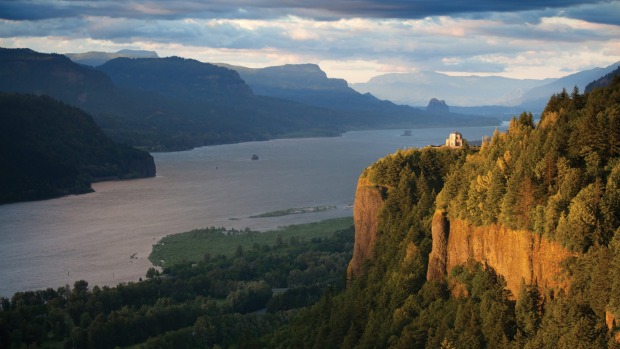
Where exactly does the Old West start? Maybe before I've even landed at Spokane Airport, as I goggle through the airplane window at arid volcanoes clawed with ravines. Maybe as I step outside the arrivals hall to vast prairie skies of marshmallow clouds, and head along raw-edged roads into town. Certainly when I check into the Davenport Hotel, whose grand lobby is a mad eruption of Victoriana. Wall-hung photos show bearded timber barons and staircase-posing ladies in crinolines. My bed is ornate as a cuckoo clock and large enough for a family of lumberjacks. It might have taken months to haul it here along the pioneer trail, dismantled on the back of an ox cart.
Well, maybe not. These days, Spokane is Washington State's second-largest city, a silver mining and agricultural centre now turned to medical sciences and food processing. Yet it still has a frontier feel to it. It only got its first church in 1881. Its river tumbles over a waterfall right downtown. The city lies on the eastern edge of barren, boulder-strew, flood-scarred scablands that look like they may have caused many an explorer to lay down and die.
We're still nowhere near the Snake River, which is a 175-kilometre coach journey south, the thought of which has me grumbling over my morning pancakes. I shouldn't have been so ungrateful. The journey provides two-and-a-half hours of the most glorious landscape I've ever clapped eyes on: rolling agricultural land called the Palouse, swollen with wheat and lentils, Tuscan in its buxom undulations, flamboyant in green, yellow and red. If I were a cartoon character, my eyes would be on stalks.
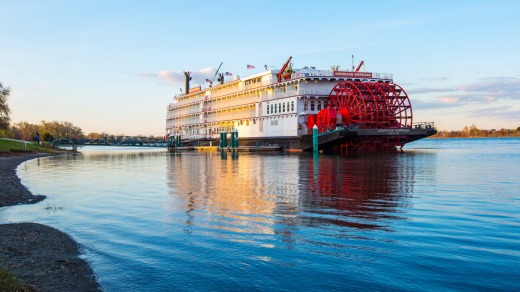
As afternoon ends the Palouse falls down arid cliffs. As our coach hairpins downwards I feel sure that this is definitely the Old West. We're in the leathery land of the Nez Perce native Americans and rough-hewn Idaho Territory. Down below, the Snake River slides through dramatic, rusting gorges. Birds of prey float in a baking hot sky.
Our river-cruise ship is straight out of a movie: a white paddlewheeler with red trim and star-spangled bunting. Its interior is a collision of brassware, frosted lamps, floral carpets and nineteenth-century oil paintings depicting romanticised landscapes of tumbling waterfalls and lurid sunsets. Later, I discover American Empress is only a fake steamboat which, despite its great red paddlewheel, really runs on diesel engines. No matter. It transports me back to a time when real steamboats were a crucial part of the opening up of the West.
The journey westward along the Snake and Columbia rivers takes us through some of the Pacific Northwest's grandest scenery. It starts at Clarkston in Washington State, twinned with Lewiston in Idaho just a spur's jingle upriver. The twin towns are named for Meriwether Lewis and William Clark, who in 1804-06 became the first Americans to traverse this region, opening up a route to the Pacific Ocean and kick-starting American control and settlement of the west. American Empress journeys as far downriver as Astoria in Oregon, named for John Jacob Astor, who set up a fur-trapping company there and became American's first multimillionaire. It's a cruise centred on rollicking stories of exploration, pioneer aspirations and the American dream.
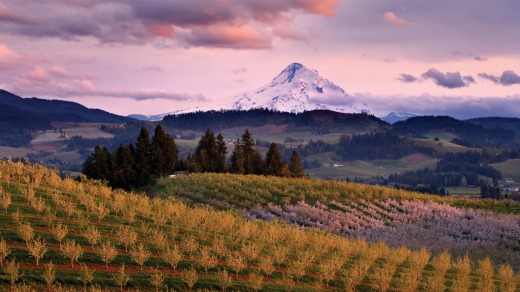
As our cruise progresses along the Snake and Columbia rivers this history unfolds at a series of river ports and interpretive centres. We start at Nez Perce Historical National Park just outside Lewiston, which relates the history of the local native tribe. A sad, beautifully shot 20-minute documentary film covers the Nez Perces' relationships with the land, early white settlers and the US Army. ''Soon there will come from the rising sun a different kind of man from any you have yet seen,'' predicted a native wise man. ''They will bring with them a book and will teach you everything, and after that the world will fall to pieces.''
In downtown Lewiston a recreation of Idaho Territory's first legislative building – scarcely more than a hut – is a harbinger of the white man's law and the woeful treatment of native Americans to come. But it's hard not to be impressed by the pioneering spirit of later Americans as we follow the river downstream. At Sacajawea State Park an interpretive centre gives an excellent account of the journey of Lewis and Clark, in whose paddle wake we're following. I sniff at whiskey barrels and poke at the dried soup the explorers carried with them, and run my fingertips over sea otter furs.
Heritage town The Dalles is packed with the breweries, brothels and shop-fronts of yesteryear, and murals depict its beginnings as the final town on the Oregon Trail, which funnelled new settlers westwards. Richland's Reach Interpretive Centre, in contrast, tells the story of the Manhattan Project, which transformed life in the mid-Columbia River, sucking in 137,000 temporary workers during the 1940s and producing plutonium for nuclear bombs throughout the Cold War.
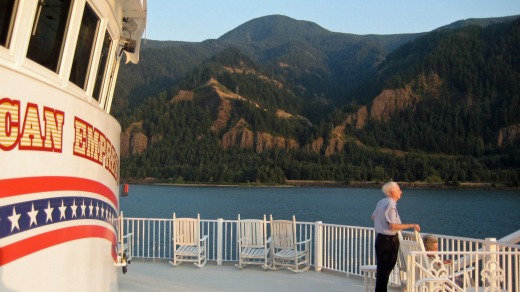
In other towns such as Stevenson – founded 1893, population 1500 – I feel as if I've straying into a later time; a Jack Reacher town in the backwoods, with its railroad track, corner stores and Stars and Stripes hanging limp in front of the post office.
This is still a remote area, but the Columbia Valley allows for vital transport links, among other things railways lines that haul 40 per cent of America's Midwest wheat to Pacific ports. There are surreal moments from the decks of American Empress as we sail through emptiness suddenly punctuated by giant storage silos or the rattle of vast goods trains. Swinging railway bridges pivot open to let our ship pass. As the highway suddenly veers towards the river, huge road trucks appear, Dinky toys against the landscape. You can feel both the physical immensity and industrial throb of America.
Landscapes from the deck of American Empress provide examples of staggering dimensions on the physical obstacles faced by early explorers and settlers. I'm travelling in July and the sun is a white hammer beating on raw red basalt cliffs and the rumpled brown hills of cowboy country. The Snake River slides through the emptiness of southeast Washington, tamed by dams into a ribbon lake. Electric pylons stand like strange totems on the hillsides.
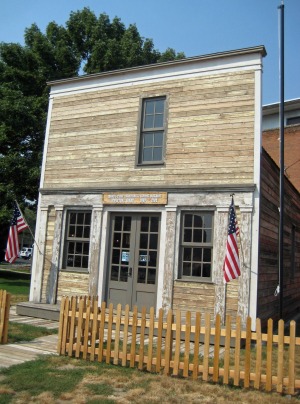
The semi-desert scenery could be somewhere in the Middle East and is a gape-worthy surprise. It's only later as the Snake joins the Columbia and swells into one of America's mightiest rivers that farmland appears, then the misty greenery I'd been expecting. Douglas firs and red cedars soar in woods tangled with vine maples and dogwood and dripping ferns. This almost sudden transition near The Dalles is a fabulous geographic trick, and the scenery just gets more immense. The great cliffs of the Columbia Gorges loom, and snow-capped Mt Hood is a perfect volcanic cone in the background.
American Empress sails this section several times, doubling back through the gorges to provide dinnertime panoramas fit for the gods. A shore excursions brings us to the cliff tops, past numerous waterfalls, to Chanticleer Point and Crown Point and scenery so daunting it gives me renewed respect for Lewis and Clark.
By the time the Columbia River reaches Astoria it's almost at the Pacific Ocean. The town, founded in 1811, is my favourite port of call. A waterfront promenade is lined by historic breweries and canneries turned hipster cafes. It's 19th-century main street is overlooked by a hillside of shingle mansions where gardens overflow with roses and foxgloves. The river is wide as a bay, majestic and dotted with cargo ships at anchor. Sea lions bark and seagulls shriek: not quite the Old West any more.
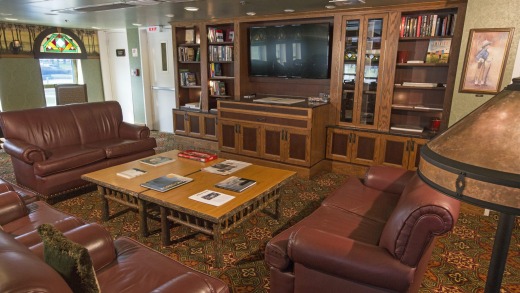
A cruise on the Columbia-Snake rivers is different from the river cruising in Europe that many Australians are used to. Here's how.
While the history of exploration and settlement in this region is fascinating, don't expect the culture-rich river ports of Europe. White settlement here only spans 150 years, and many towns are small, relatively basic rural communities.
It's more than 700 kilometres from the cruise starting point at Clarkston to its furthest port at Astoria. The ship doubles back and forwards on occasion, notably in the Columbia Gorges. This is a greater sailing distance over nine days than most European cruises. Expect more night cruising and more time on the river: not a negative given the scenery.
American Empress has two evening seatings in its main restaurant, unlike European ships on which everyone dines at once. Early dining starts at 5.30pm and the later seating is at 7.30pm. Guests nominate their preferred time when booking, but the choice isn't guaranteed.
Most European river cruises have all-inclusive policies, not the case on US cruises. On American Empress, you'll pay extra for drinks outside mealtimes, tips and port charges. Complimentary hop-on hop-off shuttle buses take you around port sights, but premium shore excursions (such as fishing, a Mount St Helens tour or canyon jet-boating) come at extra charge.
traveloregon.com; experiencewa.com
United Airlines flies from Melbourne to Los Angeles or Sydney to San Francisco, with onward domestic connections to Spokane and Portland. Phone 131 777, see united.com.
American Queen Steamboat Company operates nine-day Colombia and Snake river cruises between Clarkston and Vancouver, Washington (not Vancouver BC), priced from $3675 a person twin share, including meals and most excursions. See americanqueensteamboatcompany.com.